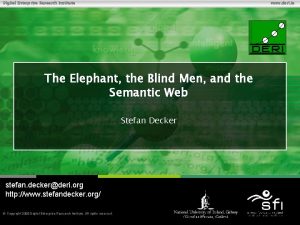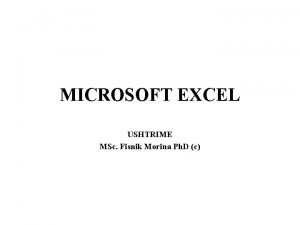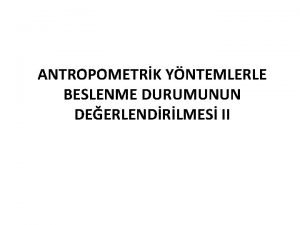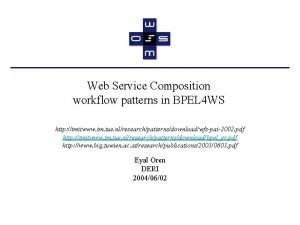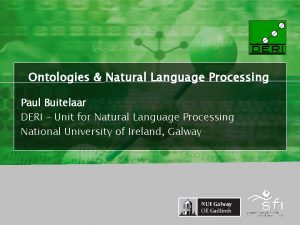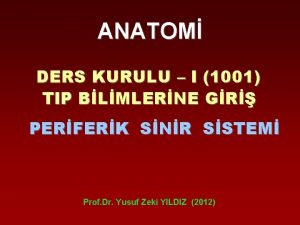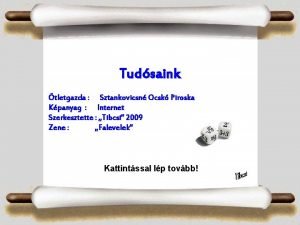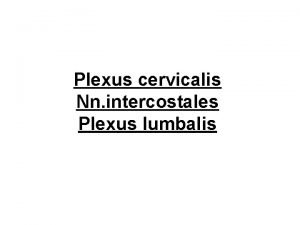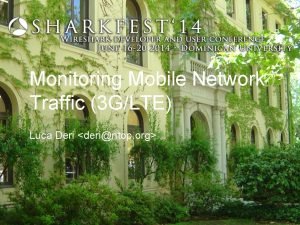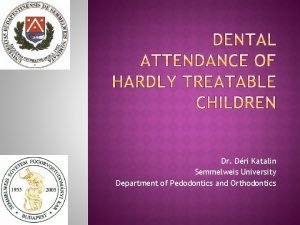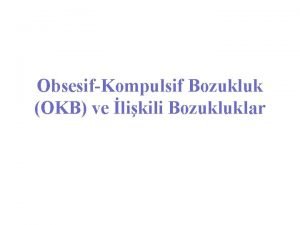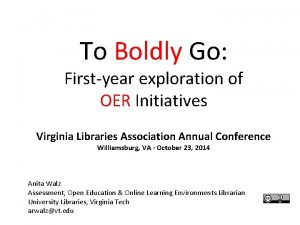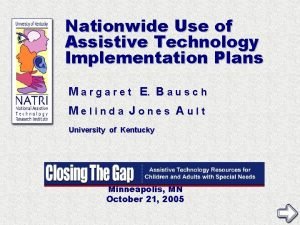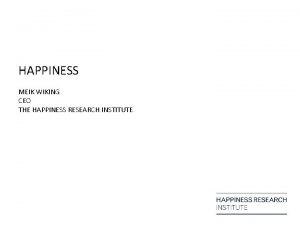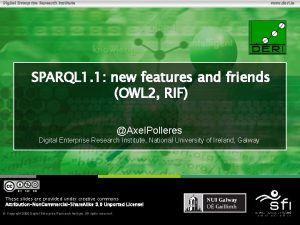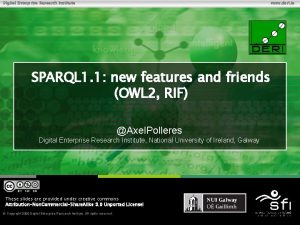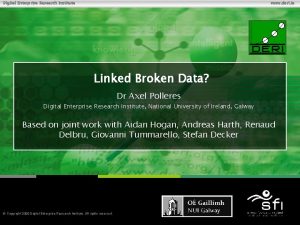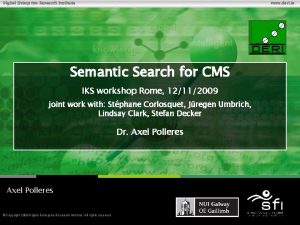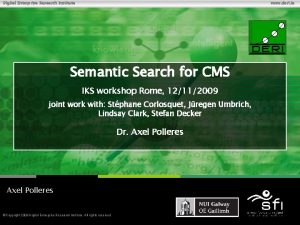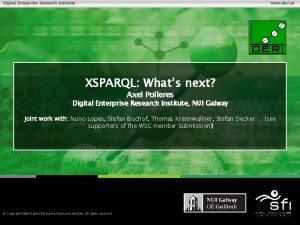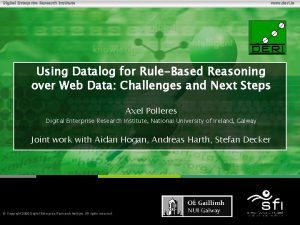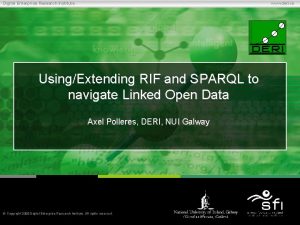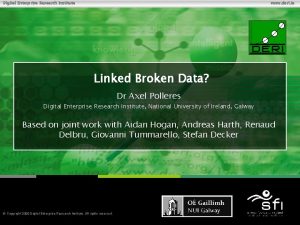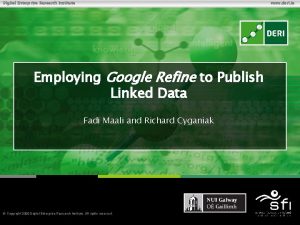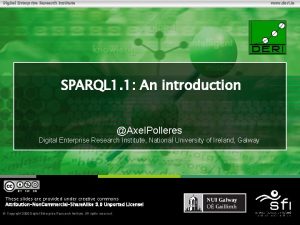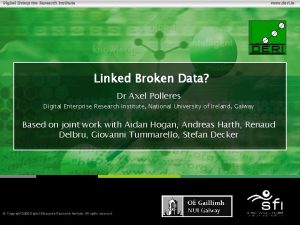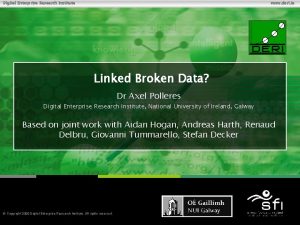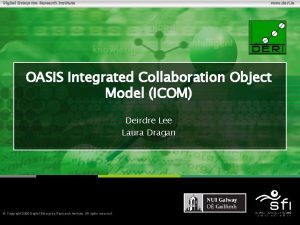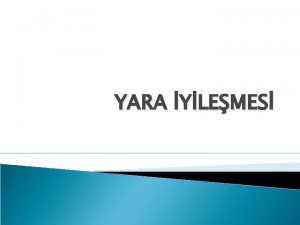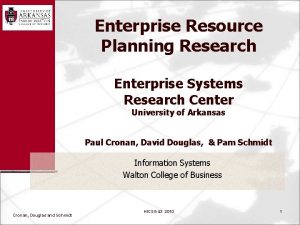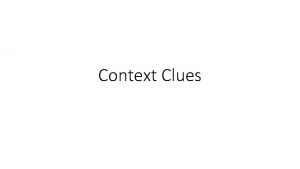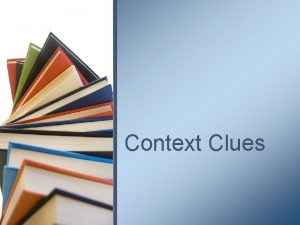Digital Enterprise Research Institute www deri ie Context




























- Slides: 28

Digital Enterprise Research Institute www. deri. ie Context Dependent Reasoning for Semantic Documents in Sindice Renaud Delbru and Axel Polleres and Giovanni Tummarello and Stefan Decker Copyright 2008 Digital Enterprise Research Institute. All rights reserved.

Motivations Digital Enterprise Research Institute Sindice Semantic Web Index www. deri. ie + 30 million of documents Reasoning to find documents Materialise implicit knowledge: IFPs, membership (sc, sp) Goal: Increase Precision/Recall (also find implicit information) But Deal with real-world web data (heterogeneous, messy) Computationally expensive (slow down indexing process) Efficient&effective reasoning methodology required 2

Caching Ontologies Digital Enterprise Research Institute Naive approach: Cache all fetched ontologies + RDF data in one triple store Compute and cache deductive closure Problem: Leads to innapproriate deductive closure (too much) Ontology is meant to be shared and reused Diverging reuse reflects diverving points of view divergent semantics Example: MY ontology can redefine foaf: name, e. g. as IFP – May lead to owl: same. As inferences – valid in the context of MY RDF graphs, but not for everybody 3 www. deri. ie

Context-Dependent Reasoning Digital Enterprise Research Institute Context-Dependent Reasoning: Ensure context is preserved when aggregating documents “Quarantined Reasoning” approach: – Confine inference results to their context – Inferred axioms are invalid outside their context Partition the Web of Data into smaller contexts (on a “per document” basis). . . . and aggregate contexts based on dependencies Prevents undesirable results. . . . while preserving intended meaning of the document 4 www. deri. ie

Reasoning over Linked Data Digital Enterprise Research Institute 5 www. deri. ie

Reasoning over Linked Data Digital Enterprise Research Institute 6 www. deri. ie

Reasoning over Linked Data Digital Enterprise Research Institute 7 www. deri. ie

Reasoning over Linked Data Digital Enterprise Research Institute www. deri. ie Document taken alone : no semantics Recursive fetching of ontologies is mandatory Make use of 8 Explicit owl: imports Implicit imports “by namespace” – make use of W 3 C best practices where possible. Intensive data processing Data fetching, pre-processing Deductive closure computing

Context on the Semantic Web Digital Enterprise Research Institute Based on Guha's ideas on a context mechanism Context = Scope of validity of a statement Aggregate context Composed by the content lifted from other contexts Contains specification of what it imports RDF document = aggregate context (as we will see later) Lifting rules Expressive formulas Enable to lift axioms from one context to another At the moment, we only use the simplest lifting rule (simple import): 9 www. deri. ie

Import closure of Documents Digital Enterprise Research Institute Explicit import owl: imports primitive Transitive: if OA imports OB and OB imports OC, then OA imports OC When reasoning on an ontology O, one should consider the entire import closure of O. But, it is not a common practice 10 www. deri. ie Only 5. 56 thousand over 30 million of documents use owl: imports

Import closure of Documents Digital Enterprise Research Institute www. deri. ie Implicit import Based on W 3 C best practices – Linked Data Principles By dereferencing class or property URI : me rdf: type foaf: Person. : me foaf: name "Renaud Delbru". http: //www. w 3. org/1999/02/22 -rdf-syntax-ns http: //xmlns. com/foaf/spec/ → foaf: name rdf: type owl: Datatype. Property. http: //www. w 3. org/2002/07/owl → owl: Datatype. Property rdf: type rdf: Property. 11

Import Lifting Rule Digital Enterprise Research Institute owl: imports primitive and implicit imports See Definition 1 Cyclic import relations may occur: 12 mapped to Guha's imports. From lifting rule if OA imports OB and OB imports OA, then OA ⇔ OB Extend Guha's definition to allow cycles See Definition 2 www. deri. ie

Deductive closure of Documents Digital Enterprise Research Institute 13 Reminder: aggregate context = Document content + ontology import closure (explicit and implicit imports) Deductive closure of an aggregate context Computes full materialisation of aggregate context Original content + inferred statements Inference based on a finite entailment regime Rule-based inference engine ter Horst’s p. D* fragment (RDFS + subset of OWL) www. deri. ie

Deductive closure of Documents Digital Enterprise Research Institute www. deri. ie Deductive closure of aggregate context Lead to inferred statements that are not true in any of the source contexts alone See Definition 3 Context C 1: Context C 2: : me rdf: type foaf: Person rdfs: sub. Class. Of yago: Human. ∧ ∆C 1, C 2 = : me rdf: type yago: Human. 14

Ontology Base: Conceptual Model Digital Enterprise Research Institute Ontology Base Persistent TBox Materialise import relations between ontology Store inference results that has been performed www. deri. ie Concepts Ontology entity: rdfs: Property or rdfs: Class identified by a resolvable URI Ontology context: Named graph composed by ontology statements Ontology network: directed graph of ontology contexts where edges are import relations (see Definition 4) 15

Ontology Base: Update Strategy Digital Enterprise Research Institute 1. Import closure of Doc 1 is materialised 16 www. deri. ie

Ontology Base: Update Strategy Digital Enterprise Research Institute 1. Import closure of Doc 1 is materialised 2. Compute deductive closure of aggregate context OA, OB, OC 17 www. deri. ie

Ontology Base: Update Strategy Digital Enterprise Research Institute 1. Import closure of Doc 1 is materialised 2. Compute deductive closure of aggregate context OA, OB, OC 3. Store ∆A, B, C in a separate named graph 18 www. deri. ie

Ontology Base: Update Strategy Digital Enterprise Research Institute A new document is coming, importing only OA and OC : 1. Compute deductive closure of OA and OC 19 www. deri. ie

Ontology Base: Update Strategy Digital Enterprise Research Institute A new document is coming, importing only OA and OC : 1. Compute deductive closure of OA and OC 2. Store ∆A, C in a separate named graph 20 www. deri. ie

Ontology Base: Update Strategy Digital Enterprise Research Institute www. deri. ie A new document is coming, importing only OA and OC : 1. Compute deductive closure of OA and OC 2. Store ∆A, C in a separate named graph 3. Update deductive closure of OA, OB, OC so that the inferred triples are never duplicated 1. Substract ∆A, C from ∆A, B, C 2. add inclusion relation i. e. , 21 ∆A, B, C : = ∆A, B, C - ∆A, C + ∆A, Cowl: imports ∆A, B, C

Ontology Base: Querying Strategy Digital Enterprise Research Institute 1. A document imports OA and OB 22 www. deri. ie

Ontology Base: Querying Strategy Digital Enterprise Research Institute 1. A document imports OA and OB 2. Import closure is derived, and corresponding ontology network activated 23 www. deri. ie

Ontology Base: Querying Strategy Digital Enterprise Research Institute 1. A document imports OA and OB 2. Import closure is derived, and corresponding ontology network activated 3. The related ∆A, B, C is derived and activated 24 www. deri. ie

Ontology Base: Querying Strategy Digital Enterprise Research Institute 1. A document imports OA and OB 2. Import closure is derived, and corresponding ontology network activated 3. The related ∆A, B, C is derived and activated 4. It is then found that ∆A, B, C includes ∆A, C which is also activated Our Observation: “caching” Tbox inferences makes indexing (mostly ABox) much faster 25 www. deri. ie

Prototype and Preliminary Results Prototype implementation Digital Enterprise Research Institute Distributed architecture based on Apache Hadoop – Hadoop “worker” (map-job): reasoning agent (processing one document at a time) Single ontology base shared among “workers” – Ontology base: context aware reasoning SAIL (Aduna Sesame) – Receives sets of URIs = aggregate contexts as “queries” 26 Experimental setup Cluster of 3 nodes (á 4 cores 2. 33 GHz, 8 GB) 4 Hadoop workers / node No syncing yet done between nodes Preliminary Results 40 documents / second on average; up to 80 documents / second for simple datasets (Geonames) Original size: 18 GB - 46 GB after inference (ratio of 2. 5) www. deri. ie

Discussions Digital Enterprise Research Institute www. deri. ie Known problems Changing ontologies Possibility to hijack our system: – Let d 1 and d 2 be ABox documents, – Observe: if d 1 refers to d 2 as an ontology entity, e. g. <d 1> rdfs: sub. Class. Of <d 2>. d 2 will be added to the ontology base. – An attacker, could query indexed documents and then create a “fake” document making all indexed documents “look like” ontologies. Solutions: Add Metadata on the ontology level (last update, etc. ) Fine-grained context (on a per-entity basis) By analysing the content of d 2, we can detect that it does not contain any ontological statements about an entity d 2. The entity context d 2 will not be added to the ontology base 27

Conclusions Digital Enterprise Research Institute We introduce a context-dependent inference methodology Materialise implicit knowledge “per document” Keep track of provenance of the inferred assertions Inference based on Ter-Horst fragment (but other entailment regime possible) 28 Context-dependent Inference Enables Sindice to Be more effective in term of Precision/Recall Avoid the deduction of undesirable assertions Distribute & cache reasoning tasks on a per-document basis Future Work: Analyse precise and average time and space complexity Investigate lifting rules on ABox level (owl: same. As) Investigate fine-grained context (on a per-entity basis) www. deri. ie
 Digital enterprise research institute
Digital enterprise research institute Deri kıvrım kalınlığı normal değerleri
Deri kıvrım kalınlığı normal değerleri Tabela e pjestimit deri ne 100
Tabela e pjestimit deri ne 100 üst orta kol çevresi ölçümü
üst orta kol çevresi ölçümü Yawl deri
Yawl deri Popullacioni
Popullacioni Deri language
Deri language Plexus brachialisten çıkan sinirler
Plexus brachialisten çıkan sinirler Ocsk
Ocsk Nn intercostales
Nn intercostales Luca deri
Luca deri Dr déri katalin
Dr déri katalin Www.deri
Www.deri Psikotik okb
Psikotik okb Nonagist
Nonagist Communicating across generational differences
Communicating across generational differences Spatial deixis
Spatial deixis Soal essay komunikasi verbal
Soal essay komunikasi verbal Creative commons license
Creative commons license Putting the enterprise into the enterprise system
Putting the enterprise into the enterprise system Putting the enterprise into the enterprise system
Putting the enterprise into the enterprise system Enterprise digital architects
Enterprise digital architects Australian primary health care research institute
Australian primary health care research institute Telethon institute for child health research
Telethon institute for child health research National assistive technology research institute
National assistive technology research institute Croatian forest research institute
Croatian forest research institute Where is happiness
Where is happiness Centerpointe research institute
Centerpointe research institute Primary control vs secondary control
Primary control vs secondary control
